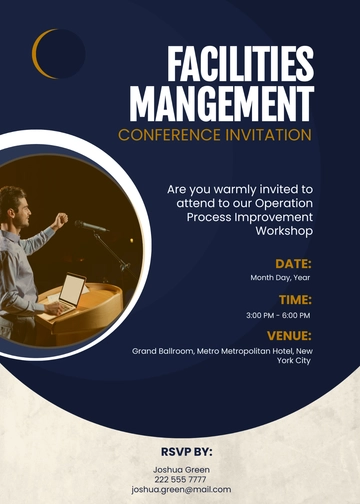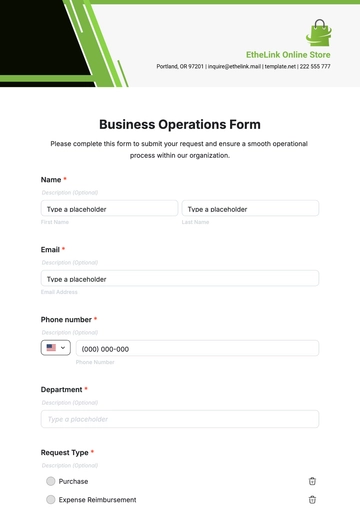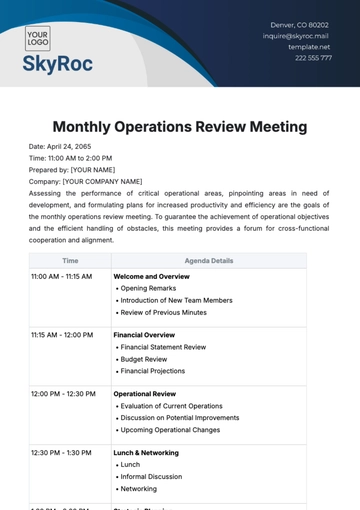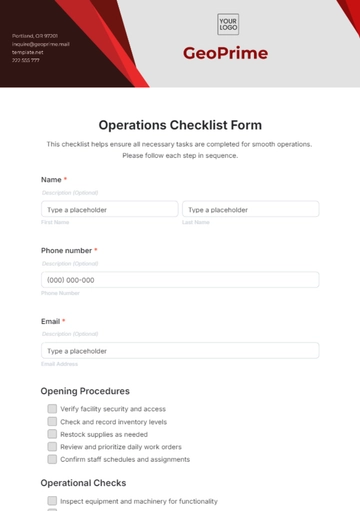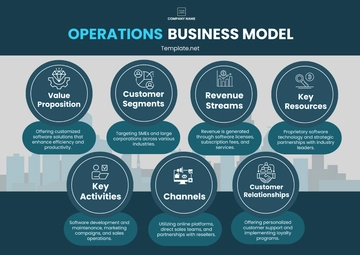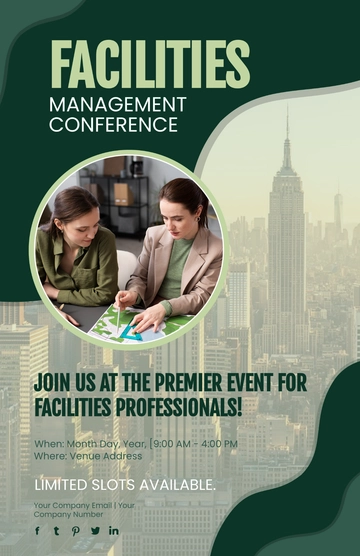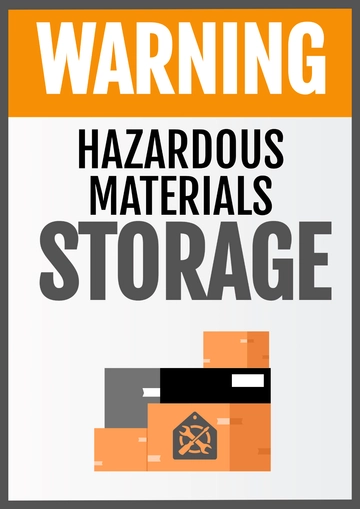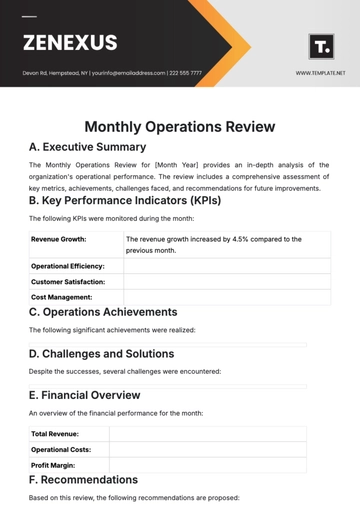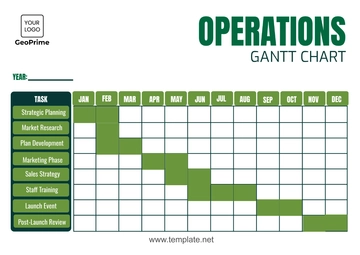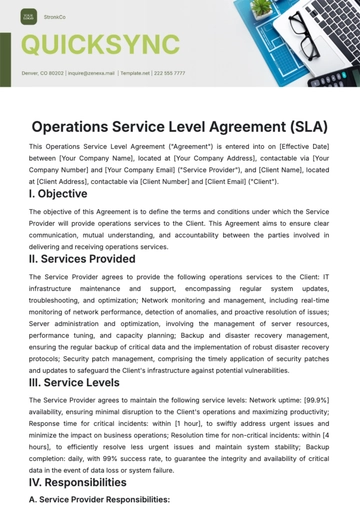Free Operations Sustainable Facilities Management Strategy Guide
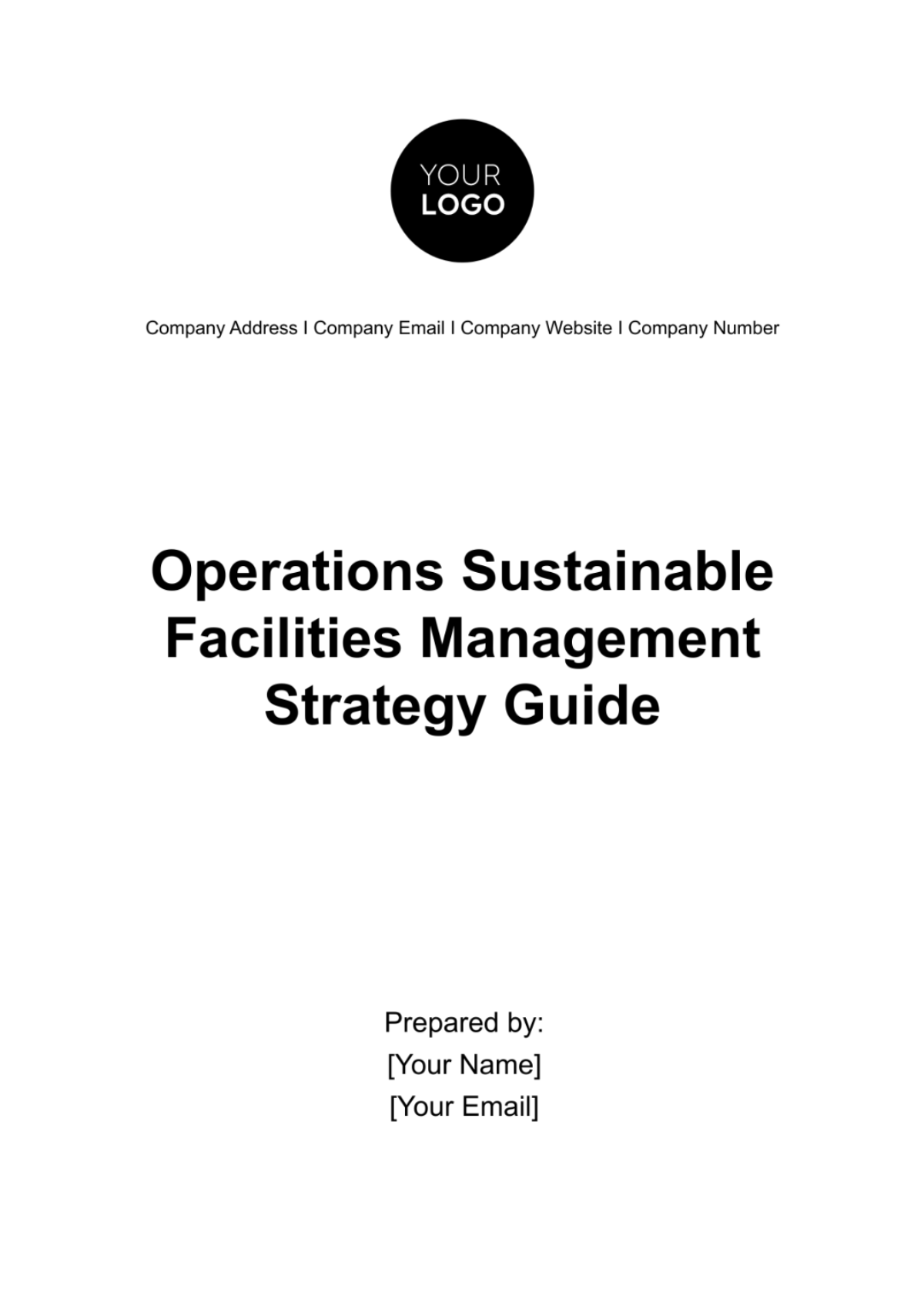
I. Introduction to Sustainable Facilities Management
In today's global landscape, businesses are increasingly recognizing the importance of integrating sustainability into their operations. Sustainable Facilities Management (SFM) focuses on optimizing resource use, minimizing environmental impact, and enhancing occupant well-being within built environments. This guide provides a comprehensive framework for implementing sustainable practices within [Your Company Name]'s facilities.
A. Definition and Importance
Sustainable Facilities Management (SFM) entails the integration of environmental, social, and economic considerations into the management of facilities and buildings. It encompasses strategies aimed at reducing energy consumption, conserving water, managing waste, improving indoor air quality, and fostering stakeholder engagement. By adopting SFM practices, [Your Company Name] can achieve cost savings, mitigate risks, enhance brand reputation, and contribute to environmental stewardship.
B. Benefits of Sustainable Facilities Management
Cost Savings: Energy efficiency measures, water conservation efforts, and waste reduction initiatives can lead to significant cost savings over time.
Risk Mitigation: By minimizing environmental impacts and complying with regulations, [Your Company Name] can mitigate legal, financial, and reputational risks.
Enhanced Brand Reputation: Demonstrating a commitment to sustainability can enhance [Your Company Name]'s reputation among stakeholders, including customers, employees, investors, and the community.
Environmental Stewardship: Sustainable Facilities Management aligns with [Your Company Name]'s corporate social responsibility goals and contributes to environmental conservation efforts.
Improved Occupant Health and Productivity: By prioritizing indoor environmental quality, [Your Company Name] can create healthier and more productive work environments for employees and occupants.
C. Overview of Operations Sustainable Facilities Management Strategy Guide
This guide outlines a systematic approach for integrating sustainability principles into [Your Company Name]'s facilities management practices. It covers key areas such as energy efficiency, water conservation, waste management, indoor environmental quality, sustainable procurement, and stakeholder engagement.
II. Understanding Sustainable Facilities Management Principles
A. Energy Efficiency
Energy efficiency is a cornerstone of sustainable facilities management, aiming to reduce energy consumption and greenhouse gas emissions while maintaining or improving performance. [Your Company Name] can achieve energy efficiency through various measures, including:
Lighting Upgrades: Replacing traditional lighting fixtures with energy-efficient LED bulbs can significantly reduce electricity consumption. Table 1 below outlines potential energy savings from a lighting upgrade project.
Fixture Type | Wattage (W) | Annual Energy Savings (kWh) | Annual Cost Savings ($) |
|---|---|---|---|
Incandescent | 60 | 438 | $52 |
LED | 10 | - | - |
HVAC Optimization: Implementing HVAC system upgrades, such as installing programmable thermostats or upgrading to high-efficiency equipment, can improve comfort levels while reducing energy usage. Table 2 illustrates potential energy savings from HVAC optimization measures.
HVAC Upgrade | Annual Energy Savings (kWh) | Annual Cost Savings ($) |
|---|---|---|
Installation of Thermostat | 1200 | $[Amount] |
Upgrade to High-Efficiency Equipment | 5000 | $[Amount] |
Renewable Energy Integration: Investing in renewable energy sources, such as solar panels or wind turbines, can further reduce reliance on grid electricity and lower carbon emissions.
B. Water Conservation
Water conservation is essential for minimizing water usage and preserving this finite resource. [Your Company Name] can implement water conservation measures, including:
Fixture Upgrades: Installing water-efficient fixtures such as low-flow faucets, toilets, and urinals can significantly reduce water consumption. Table 3 illustrates potential water savings from fixture upgrades.
Fixture Type | Flow Rate (gallons per minute, gpm) | Annual Water Savings (gallons) |
|---|---|---|
Standard Faucet | 2.2 | 7,700 |
Low-flow Faucet | 1.5 | - |
Standard Toilet | 1.6 | 7008 |
Low-flow Toilet | 1.28 | - |
Irrigation Systems: Implementing efficient irrigation systems, such as drip irrigation or smart controllers, can reduce water waste in landscaping and outdoor spaces.
Rainwater Harvesting: Collecting and storing rainwater for non-potable uses, such as irrigation or toilet flushing, can reduce demand on municipal water supplies.
C. Waste Management
Effective waste management practices aim to minimize waste generation, maximize recycling and reuse, and properly dispose of remaining waste. [Your Company Name] can implement waste management strategies, including:
Waste Audits: Conducting regular waste audits to identify sources of waste generation and opportunities for improvement.
Recycling Programs: Implementing comprehensive recycling programs for paper, plastics, glass, and other recyclable materials.
Composting Initiatives: Establishing composting programs for organic waste, such as food scraps and landscaping trimmings, to divert waste from landfills and create nutrient-rich compost for landscaping.
D. Indoor Environmental Quality
Indoor environmental quality (IEQ) encompasses factors such as air quality, lighting, thermal comfort, and acoustics that affect occupant health, comfort, and productivity. [Your Company Name] can improve IEQ through measures such as:
Air Quality Monitoring: Regular monitoring of indoor air quality parameters such as carbon dioxide (CO2), volatile organic compounds (VOCs), and particulate matter to ensure healthy indoor environments.
Green Cleaning Practices: Using environmentally friendly cleaning products and practices to minimize exposure to harmful chemicals and maintain indoor air quality.
Biophilic Design Elements: Incorporating biophilic design elements such as natural lighting, indoor plants, and views of nature to improve occupant well-being and productivity.
E. Sustainable Procurement Practices
Sustainable procurement involves sourcing goods and services that minimize environmental impact, promote social responsibility, and support local economies. [Your Company Name] can adopt sustainable procurement practices by:
Vendor Selection Criteria: Establishing criteria for selecting suppliers based on their environmental performance, ethical practices, and product sustainability.
Product Lifecycle Analysis: Conducting lifecycle assessments to evaluate the environmental impacts of products from raw material extraction to end-of-life disposal.
Supplier Engagement: Collaborating with suppliers to promote sustainability throughout the supply chain, such as reducing packaging waste or improving energy efficiency in manufacturing processes.
F. Stakeholder Engagement and Training
Stakeholder engagement is crucial for building support and fostering a culture of sustainability within [Your Company Name]. Strategies for stakeholder engagement and training include:
Employee Awareness Programs: Providing training and educational resources to employees to raise awareness of sustainability goals, initiatives, and their role in achieving them.
Stakeholder Collaboration: Engaging with tenants, customers, suppliers, and other stakeholders to solicit feedback, share best practices, and collaborate on sustainability initiatives.
Training and Capacity Building: Offering training programs and workshops to build internal capacity for implementing sustainable facilities management practices.
III. Assessing Current Operations
Before developing a sustainable facilities management plan, [Your Company Name] should conduct a thorough assessment of current operations to identify strengths, weaknesses, and opportunities for improvement. This assessment can include:
Assessments | Details |
|---|---|
Sustainability Audit | Evaluating energy usage, water consumption, waste generation, indoor environmental quality, and procurement practices to benchmark performance against industry standards and identify areas for improvement. |
Key Performance Indicators (KPIs) | Establishing KPIs to measure progress towards sustainability goals, such as energy intensity (energy use per square foot), water usage per occupant, waste diversion rate, and indoor air quality indices. |
Benchmarking Against Industry Standards | Comparing [Your Company Name]'s performance metrics to industry benchmarks and best practices to identify opportunities for improvement and set realistic targets. |
IV. Developing a Sustainable Facilities Management Plan
Based on the assessment findings, [Your Company Name] can develop a comprehensive sustainable facilities management plan that outlines goals, objectives, strategies, and action plans for achieving sustainability targets. This plan should include:
Setting Goals and Objectives: Establishing clear and measurable sustainability goals, such as reducing energy consumption by 20% or achieving zero waste to landfill by [20xx].
Establishing Priorities: Prioritizing initiatives based on their potential impact, feasibility, and alignment with organizational values and objectives.
Defining Actionable Strategies: Identifying specific actions and initiatives to achieve sustainability goals, such as implementing energy-saving retrofits, upgrading water fixtures, or launching recycling programs.
Allocating Resources: Allocating budget, staff, and other resources necessary for implementing sustainable facilities management initiatives and ensuring accountability for achieving targets.
V. Implementation Strategies
A. Energy Management
Energy management is a multifaceted approach that encompasses various strategies to optimize energy usage and reduce consumption. In addition to the measures outlined earlier, such as lighting upgrades, HVAC optimization, and renewable energy integration, [Your Company Name] can also explore innovative technologies like smart building systems and energy management software. These technologies can provide real-time monitoring and control of energy usage, allowing for more precise management and identification of energy-saving opportunities. Moreover, implementing energy management systems can enable predictive maintenance, helping to prevent equipment failures and optimize energy performance over time.
B. Water Conservation
Water conservation efforts go beyond simply installing water-efficient fixtures and implementing irrigation systems. [Your Company Name] can further enhance water conservation by conducting regular water audits to identify leaks, inefficiencies, and opportunities for improvement. Implementing water reuse systems, such as greywater recycling or onsite water treatment, can also help reduce reliance on municipal water sources and minimize wastewater discharge. Additionally, educating building occupants on water-saving practices and promoting a culture of water conservation can further amplify the impact of water management initiatives.
C. Waste Reduction and Recycling
Effective waste reduction and recycling programs require ongoing monitoring, engagement, and innovation. In addition to traditional recycling initiatives, [Your Company Name] can explore opportunities for source reduction by implementing policies to reduce packaging waste, encourage reusable alternatives, and promote circular economy principles. Collaborating with suppliers to optimize packaging design and materials can also help minimize waste generation upstream. Furthermore, implementing composting programs for organic waste and exploring opportunities for material recovery and reuse can further enhance waste diversion efforts and contribute to a more circular approach to resource management.
D. Indoor Environmental Quality Improvements
Indoor environmental quality (IEQ) improvements are essential for creating healthy, productive, and comfortable indoor environments. In addition to the measures mentioned earlier, [Your Company Name] can prioritize building occupant engagement and feedback to identify IEQ concerns and opportunities for improvement. Implementing occupant-centric design principles, such as flexible workspace layouts and adjustable lighting and temperature controls, can empower building occupants to personalize their indoor environments and enhance comfort and satisfaction. Moreover, investing in indoor plants, green walls, and biophilic design elements can not only improve air quality but also promote a sense of well-being and connection to nature among building occupants.
E. Sustainable Procurement Practices
Sustainable procurement practices extend beyond selecting environmentally friendly products to encompass ethical sourcing, supply chain transparency, and social responsibility considerations. In addition to the strategies outlined earlier, [Your Company Name] can collaborate with suppliers to conduct lifecycle assessments and environmental product declarations (EPDs) to evaluate the environmental impact of products throughout their lifecycle. Implementing supplier diversity programs and supporting local and minority-owned businesses can also help foster resilient and inclusive supply chains. Furthermore, integrating sustainability criteria into procurement policies and contracts can incentivize suppliers to adopt more sustainable practices and products, driving positive change across the supply chain.
F. Stakeholder Engagement and Training
Stakeholder engagement and training are critical for building support, fostering a culture of sustainability, and empowering individuals to contribute to sustainable facilities management efforts. In addition to the initiatives mentioned earlier, [Your Company Name] can establish cross-functional sustainability teams or committees to drive engagement, collaboration, and accountability across the organization. Providing regular training and professional development opportunities on sustainability topics can help build internal capacity and empower employees to champion sustainability initiatives within their respective roles. Moreover, engaging with external stakeholders, such as tenants, customers, and community organizations, can provide valuable insights, feedback, and collaboration opportunities to advance sustainability goals and foster positive social and environmental impact beyond [Your Company Name]'s operations.
VI. Monitoring, Measurement, and Continuous Improvement
Monitoring, measurement, and continuous improvement are essential for tracking progress, identifying areas for improvement, and optimizing sustainable facilities management initiatives. [Your Company Name] can implement:
Methods | Details |
|---|---|
Establishing Monitoring Protocols | Implementing systems for tracking and monitoring key performance indicators (KPIs) related to energy usage, water consumption, waste generation, and indoor environmental quality. |
Analyzing Performance Data | Regularly analyzing performance data to identify trends, track progress towards sustainability goals, and pinpoint areas for improvement. |
Identifying Areas for Improvement | Using performance data and feedback from stakeholders to identify opportunities for further optimization and refinement of sustainable facilities management strategies. |
Iterative Process Improvement | Continuously refining and improving sustainable facilities management practices based on lessons learned, technological advancements, and changing business needs. |
VII. Case Studies and Best Practices
[Your Company Name] can learn from successful sustainable facilities management initiatives and best practices implemented by other organizations. Case studies and best practices can provide insights, inspiration, and practical guidance for implementing sustainable facilities management strategies effectively.
Energy Management: [Company X] implemented an advanced energy management system, resulting in significant reductions in energy consumption and costs.
Water Conservation: [Name of Municipality] adopted smart meters and public awareness campaigns to reduce water consumption and promote sustainable water use.
Waste Reduction and Recycling: [Company Z] established comprehensive waste management programs focusing on source reduction, recycling, and waste-to-energy initiatives.
Indoor Environmental Quality Improvements: [Architectural Firm Name] designed the Green Office Building with biophilic principles and advanced HVAC systems for optimal indoor environmental quality.
Sustainable Procurement Practices: [Retailer Name] prioritized responsible sourcing and supplier engagement to align procurement practices with sustainability goals.
Stakeholder Engagement and Training: [Nonprofit Organization Name] offered educational programs and outreach initiatives to empower individuals and communities to adopt sustainable practices.
VIII. Conclusion
In conclusion, implementing a sustainable facilities management strategy is not just a matter of ticking boxes; it's a journey towards resilience, responsibility, and long-term success. By prioritizing energy management, water conservation, waste reduction, indoor environmental quality improvements, sustainable procurement practices, and stakeholder engagement and training, [Your Company Name] can position itself as a leader in sustainability while reaping tangible benefits such as cost savings, risk mitigation, and enhanced brand reputation.
However, the journey doesn't end with the development of a strategy; it requires ongoing commitment, collaboration, and continuous improvement. By embracing sustainability as a core value and integrating it into every aspect of its operations, [Your Company Name] can not only minimize its environmental footprint but also create a more prosperous, equitable, and resilient future for all.
- 100% Customizable, free editor
- Access 1 Million+ Templates, photo’s & graphics
- Download or share as a template
- Click and replace photos, graphics, text, backgrounds
- Resize, crop, AI write & more
- Access advanced editor
Transform your facility management with Template.net's Operations Sustainable Facilities Management Strategy Guide Template. This template, customizable and editable with our Ai Editor Tool, is your blueprint for eco-friendly operations. Craft a comprehensive strategy that balances efficiency with sustainability, exclusively available at Template.net. Lead the way in green initiatives and enhance your facility's environmental footprint.
